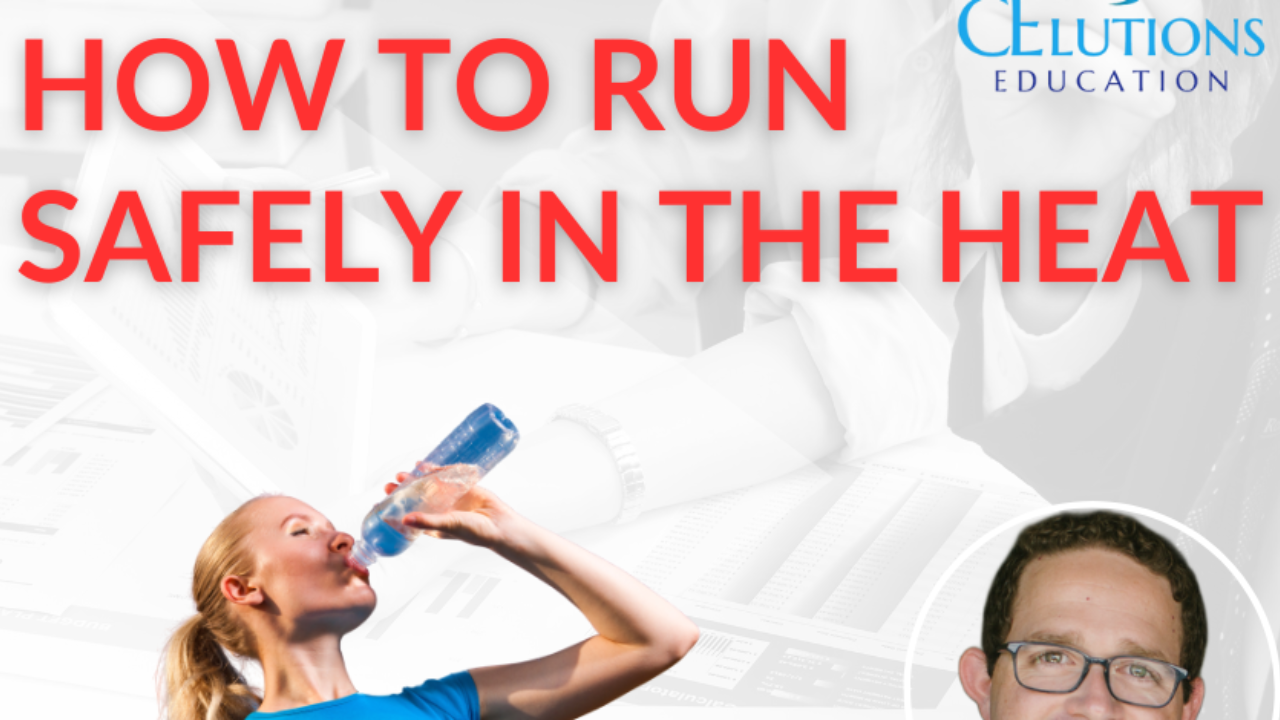How To Run Safely In The Heat
Jul 26, 2023
Summer sees many runners logging miles. Whether it’s training for a race, enjoying the warm weather or achieving fitness goals, summer is a wonderful time to be outside running. However, it’s important to urge patients to be cautious while running in warm weather. Here are some guidelines to safely run in the heat.
Physiological Effects Of Running In The Heat
Running increases the biological demand for energy (ATP) when the body breaks down ATP it produces heat triggering internal temperature regulators. The temperature regulators in the hypothalamus then signal for sweat to be produced. Additionally, blood is circulated away from the major internal organs and muscles towards the skin where blood vessels are dilated. The increased surface area of the skin allows for an evaporative cooling effect through sweat production, preventing the internal temperature from increasing. If runners are not replenishing with fluids, electrolytes and nutrient rich foods they risk heat stress and even heat stroke.
Running In The Heat Guidelines
Time of day:
Run early in the morning or at sunset
Avoid running between 12:00 – 5:00 pm (highest temperatures)
Weather:
High humidity decreases the body’s evaporative rate
Early mornings have low ambient temperature but high humidity
Running route:
Opt for light colored tracks, dirt trails or grass
Avoid asphalt or artificial turf
Consider shaded routes
Avoid highly reflective areas such as bodies of water or glass buildings
Physical intensity:
Reduce your training intensity in hot temperatures
Hydration guidelines:
1 liter of water loss per hour when exercising in high temperatures
4 hours prior to running: Consume 16-20 ounces of water
10-15 minutes prior to running: Consume 8-12 ounces of water
While running: Consume 3-8 ounces of water every 15-20 minutes
Sports drinks containing sodium, potassium, and other electrolytes are also important to consume when running in high temperatures. Maintaining electrolyte balance is beneficial to avoid cramping and maintain appropriate hydration levels.
Nutrition:
Eat every 45-60 minutes when running in the heat
Select carbohydrates and glucose-rich foods:
Bananas
Energy bars (i.e Cliff Bars, Rx Bars or gels)
Clothing:
Choose breathable moisture wicking fabrics to keep cool:
Polyester
Polypropylene
Nylon
Wear a hat to cover the face
Signs And Symptoms Of Overheating
Advise runners to be mindful of the signs and symptoms of overheating
Cramping
Nausea
Lightheadedness
Dizziness
Fatigue
Sweating profusely
If runners begin to feel faint or notice signs of nausea, recommend they begin to walk, drink water, or consume a sports drink in order to restore electrolyte balance and rehydrate. Runners experiencing exhaustion with nausea, vomiting, disorientation, confusion, or impaired balance, may be experiencing heat stroke. This is due to the internal body temperature being greater than 104 degrees. This is a medical emergency, potentially requiring an ice bath or intravenous fluid to regulate body temperature and avoid long-term injury.
Heat fainting can occur secondary to an abrupt stop when running in high temperatures due to a sharp drop in heart rate. Advise runners to cool down with a few minutes of easy jogging or walking while rehydrating in order to safely reduce heart rate before coming to a complete stop.
Not only can it be more challenging to run in the heat, but this can also affect runners' form and biomechanics. Significant fatigue can result in a breakdown in form and increase risk to injury.
How To Become More Confident In Your Running Gait Analysis
Performing a running gait analysis can be intimidating for many clinicians. If you are interested in learning more about providing a running gait analysis and starting your own running gait analysis clinic check out our continuing education course “The Essentials of Running Gait Analysis”. Lastly, if you have questions about this content or the course feel free to reach out to us to discuss and we will personally respond to your questions.
Listen to the podcast!
If you haven’t done so already grab the “Running Shoe Reference Guide” and prescribe your runners the right shoes.
References:
https://www.physio-pedia.com/Physiology_of_Sweat


